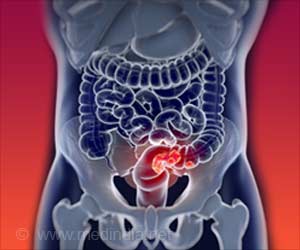A study published on bmj.com suggests that testing women to see if they are cured of HPV is more effective and cheaper than cytology testing alone.

In England, cervical screening is recommended every three years for women aged 25-49 and every five years for women aged 50-65 years.
Cervical intraepithelial neoplasia or CIN are pre-cancerous lesions on the surface of the cervix that can develop into cervical cancer if left untreated. After treatment for high grade CIN, guidelines in the UK previously recommended annual cytology for at least 10 years. After low grade CIN, cytology is recommended at six, 12 and 24 months, and if all results are negative then women can resume routine screening.
Previous studies are inconsistent about whether or not HPV testing as 'test of cure' is more effective or cost-effective than cytology testing alone. So far, only two published studies have been identified, one concluding that it was potentially a cost-effective strategy and the other that it increased costs and added little or no improvement to life expectancy.
Authors from the London School of Hygiene & Tropical Medicine and Cancer Council, NSW in Australia therefore carried out a study to assess the cost-effectiveness of HPV testing after treatment for CIN. They took data from six sites across England that returned women to routine screening after a single negative HPV test result at six months.
Almost two-thirds (63%) of women were aged 35 or younger and one in 10 had been treated for CIN stage 1. The rest were treated for CIN stages 2 or 3.
The authors say that early use of HPV testing after treatment averts more cases of CIN stage 3 and is cost-saving compared to current practice because it is more effective at early detection of women who are at risk of recurrent disease in future. They add that HPV testing results in fewer colposcopies (a detailed examination of the cervix) over 10 years than cytology only follow-up, and a higher proportion of colposcopies resulted in re-treatment - an important reduction in the burden of follow-up on women, and also on the health system.
In the second study, researchers compared the risk of cervical cancer in 38,956 women in the Netherlands who returned to routine screening after completing their cytological post-treatment follow-up for CIN with women with normal cytology results.
They found a fourfold increased risk in treated women (35 cases per 100,000 woman years) compared with 6 cases per 100,000 woman years for untreated women, regardless of age and grade of CIN.
They say their results "have implications for women treated for cervical intraepithelial neoplasia, although how the excess risk could be decreased is not straightforward."
In an accompanying editorial, clinicians from the departments of pathology and epidemiology at the VU Medical Centre in Amsterdam also suggest that cytology and HPV testing at six and 24 months should be sufficient. They agree that post-treatment surveillance should aim at detecting HPV and question whether short-term surveillance "constitutes sufficient follow-up before patient return to the usual screening programme". They suggest there is no evidence to long term intensive monitoring and that "current guidelines [should] be modified".
Source-Eurekalert
 MEDINDIA
MEDINDIA



 Email
Email









